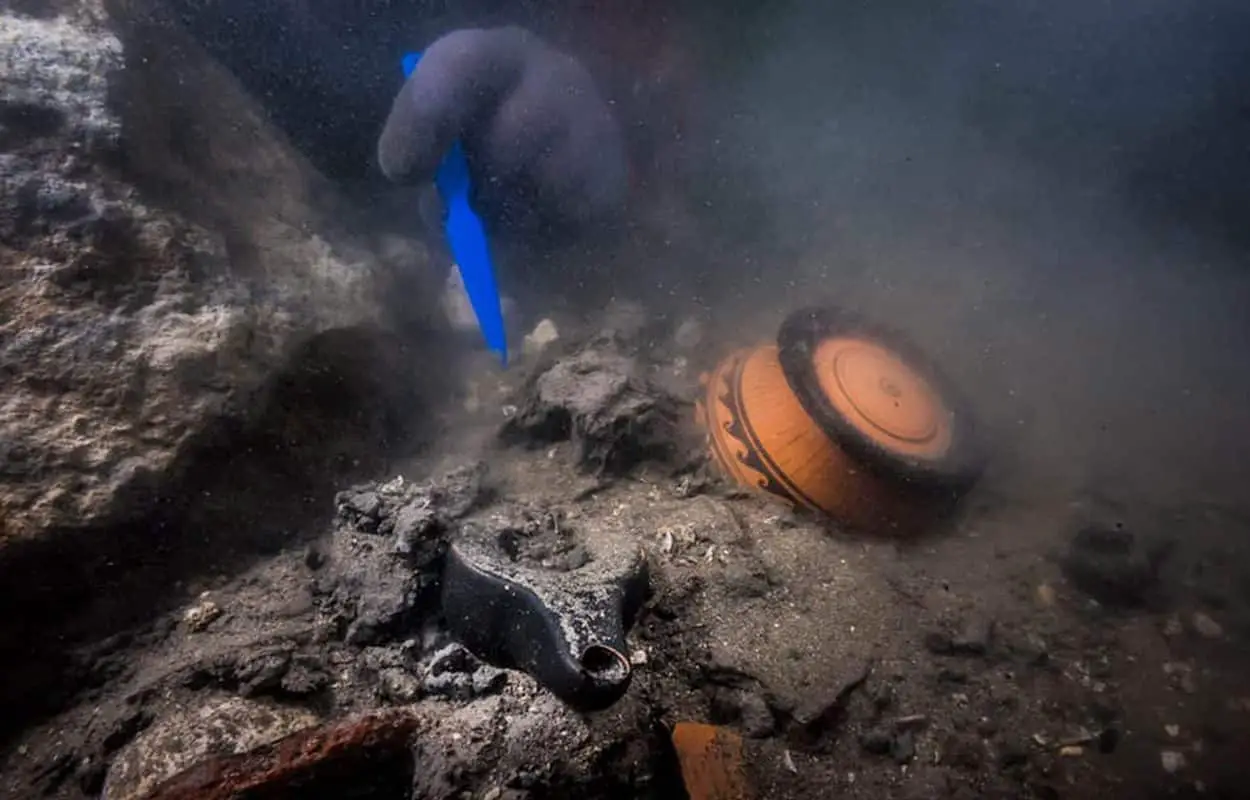A team of underwater archaeologists from the European Institute of Sunken Archaeology (IEASM), have discovered an ancient warship in the submerged city of Heraklion in Abi Qir Bay, Egypt.
Heraklion, also known as Thonis was an Egyptian city located near the Canopic Mouth of the Nile. During the end of the 2nd century BC, a combination of earthquakes, tsunamis, rising sea levels, and soil liquefaction, resulted in Heraklion being submerged along with the adjacent population centres of Canopus and Menouthis.
During this period, the ship was docking near the temple of Amun, but was struck by falling stones when the temple collapsed as a result of a major seismic event. The debris buried the ship to a depth of 5 metres (15 feet) at the bottom of a cannel, entombing the wreck (and protecting it) in layers of hardened clay.
“This discovery beautifully illustrates the presence of the Greek merchants who lived in that city,” read a statement from the Egyptian Ministry of Antiquities
Initial studies suggest that the ship was around 25 metres in height, and was constructed to the classic flat-bottomed hull design using mortise-and-tenon joints. Such ships were either rowed or sailed, and were mainly navigated in the Nile and the Nile Delta.
Franck Goddio, president of the European Institute for Underwater Archaeology said: “The finds of fast galleys from this period remain extremely rare, the only other example to date being the Punic Marsala Ship from 235 BC.” However, “Before this discovery, Hellenistic ships of this type were completely unknown to archaeologists” added Goddio.
Professor Ehab Fahmy, head of the Central Administration of Sunken Monuments, said: “the mission also succeeded in finding the remains of a Greek funeral area dating back to the beginning of the fourth century BC, at the entrance of the northeast channel into the city, where they were allowed to settle during the late Pharaonic era, and they held their funeral temples near the main temple”.
Header Image Credit : Egyptian Ministry of Tourism and Antiquities





